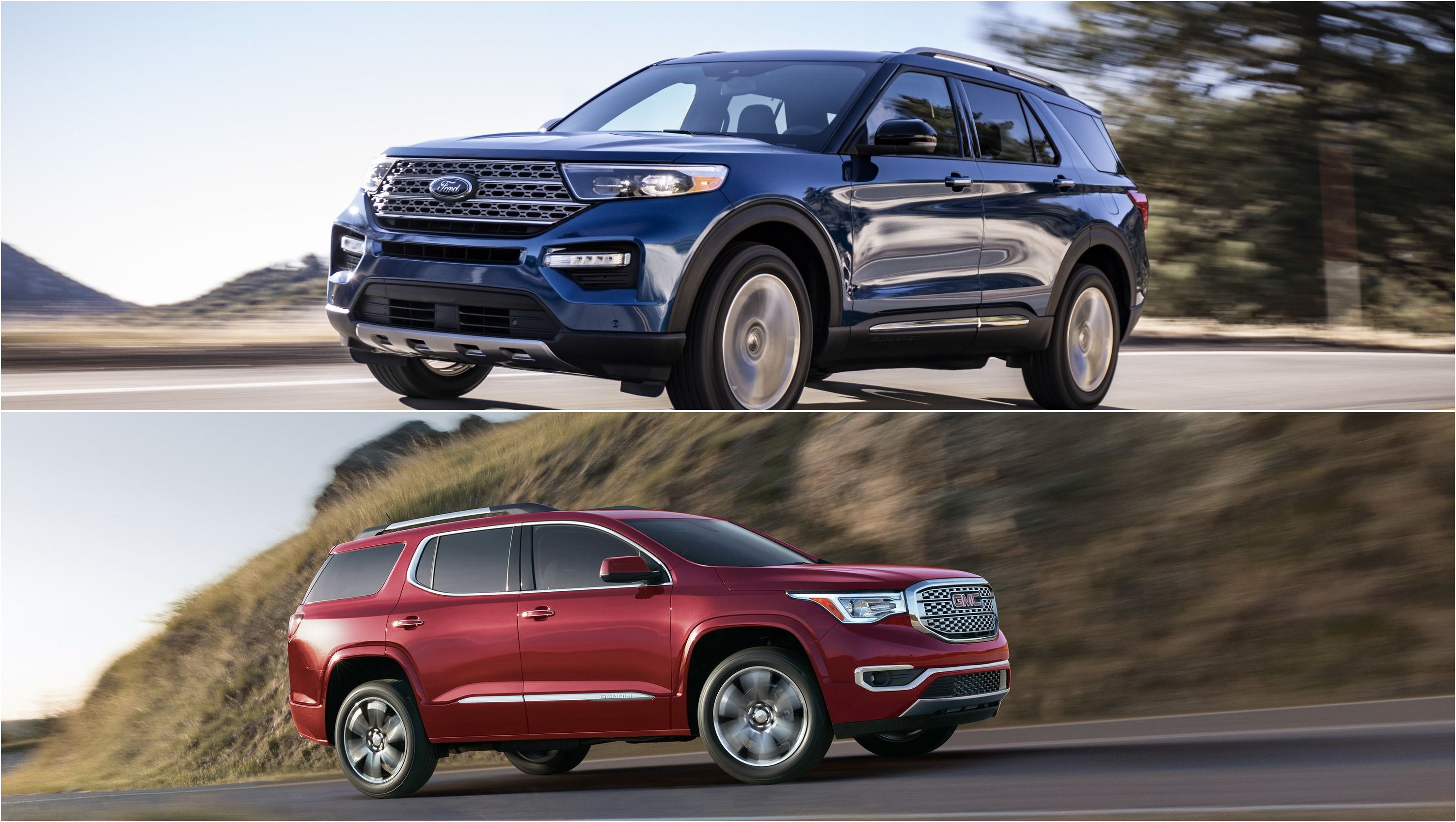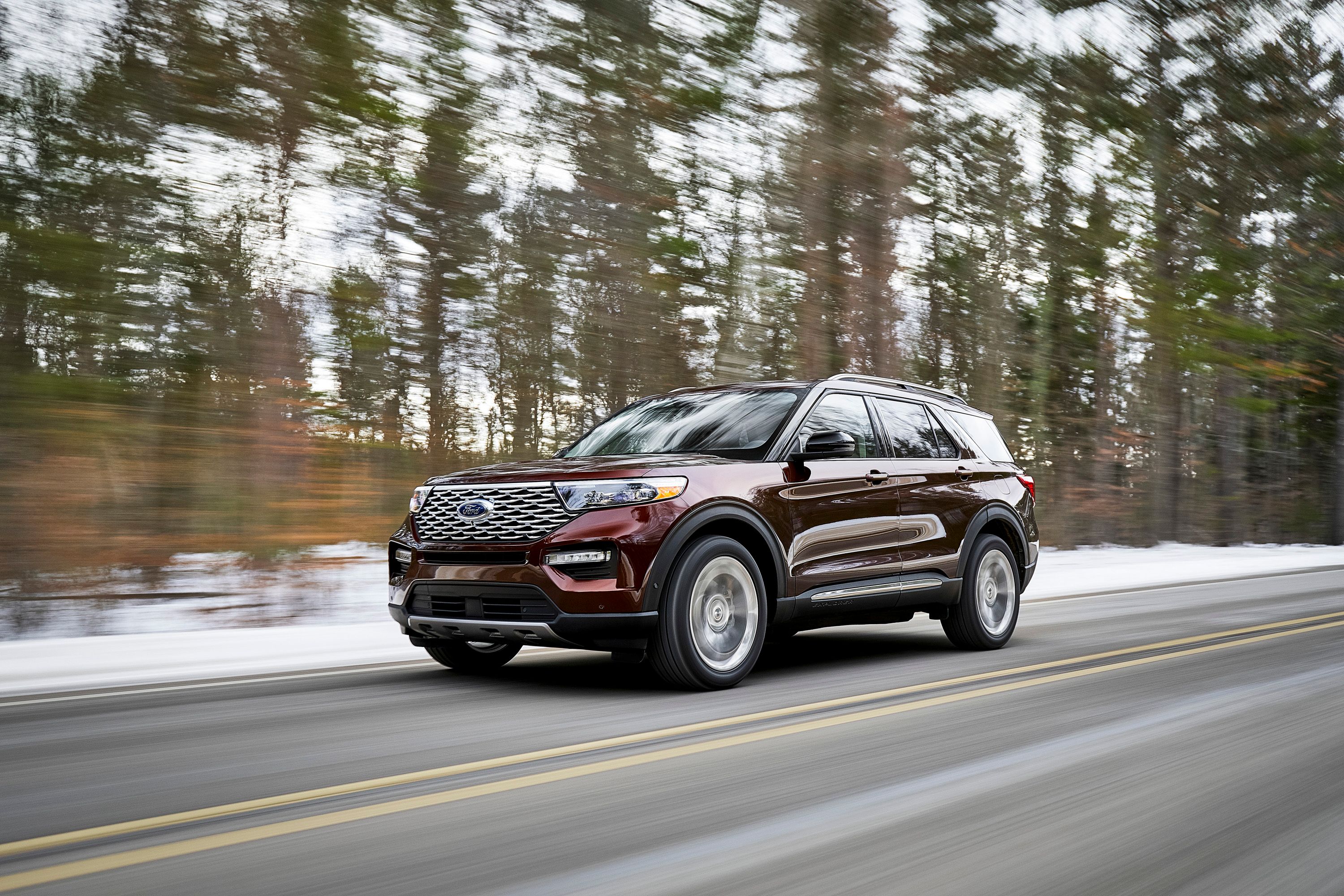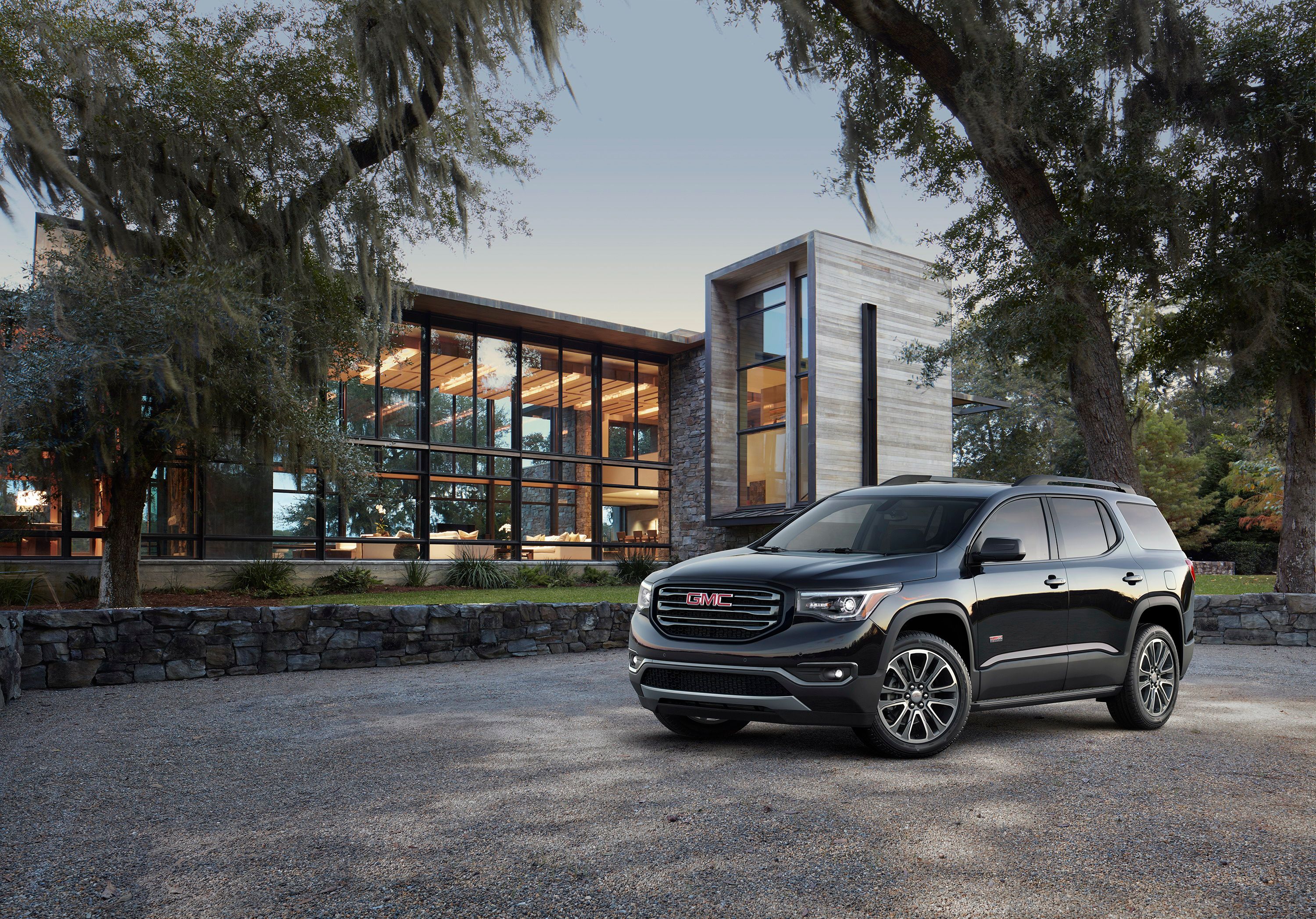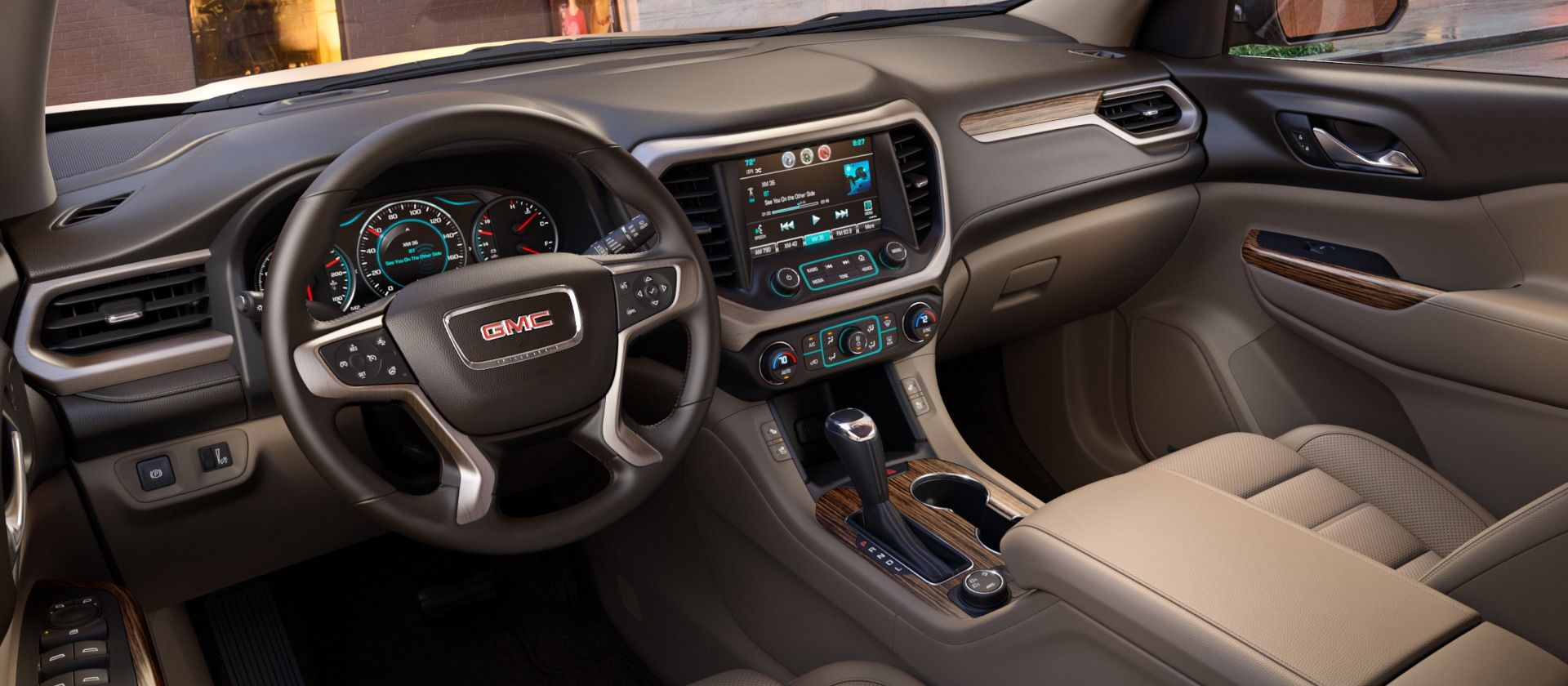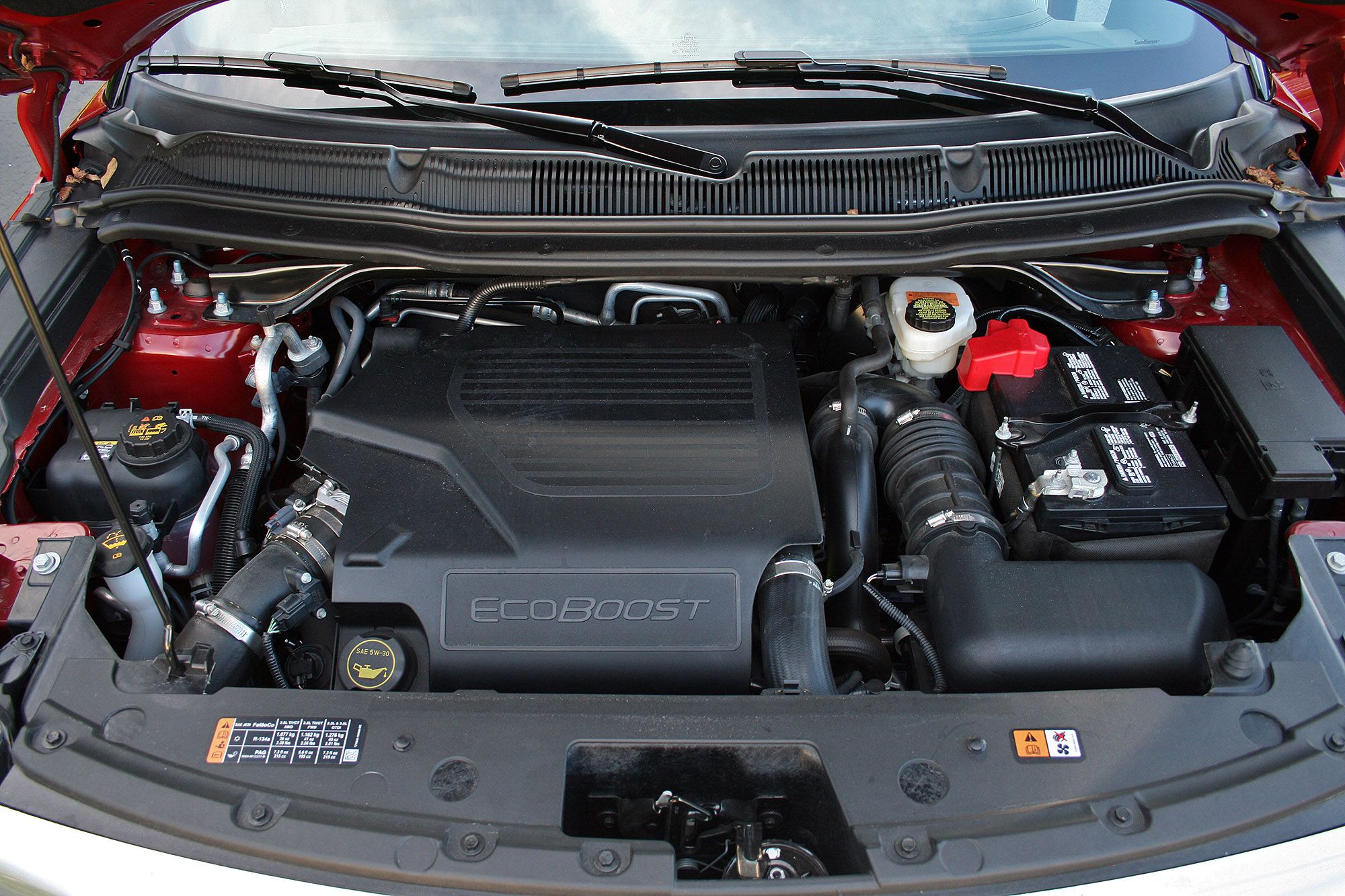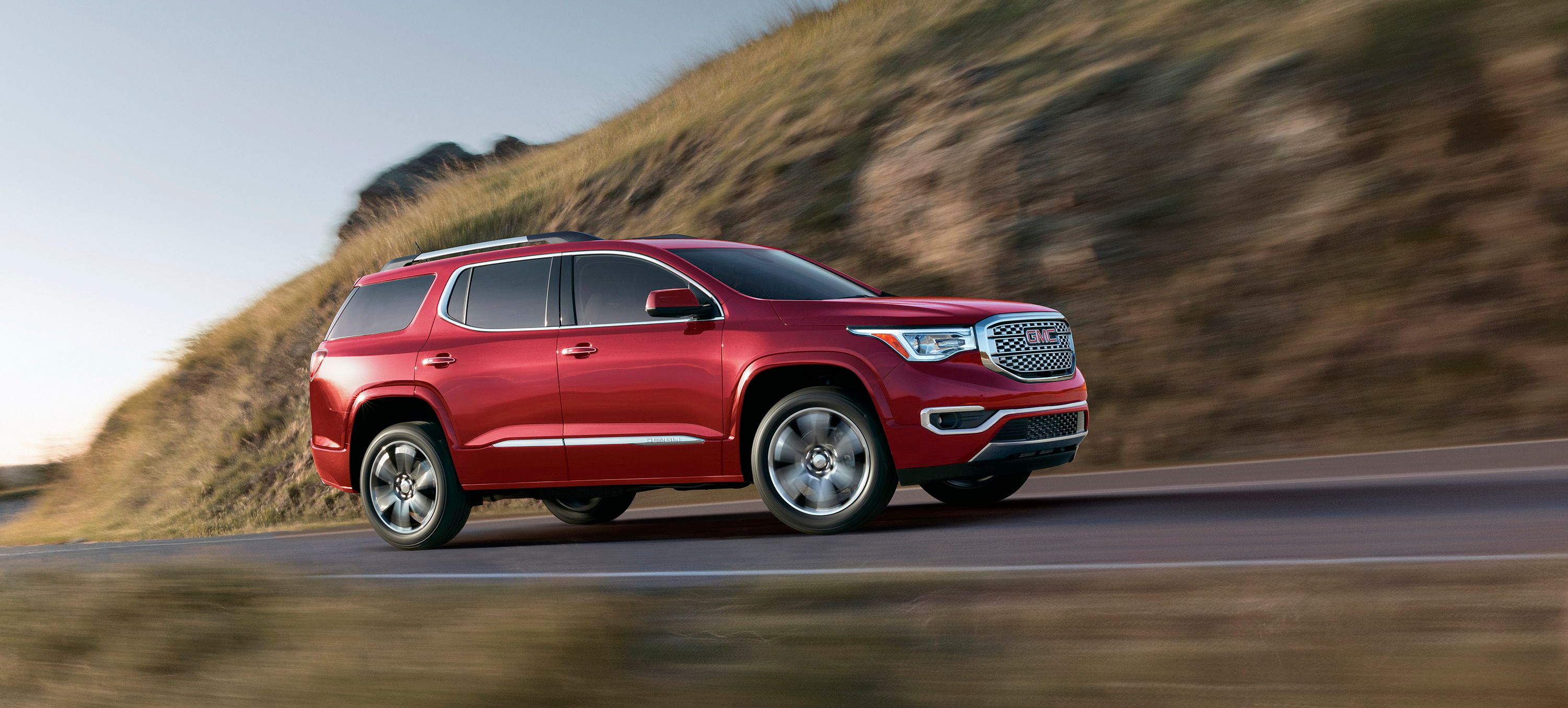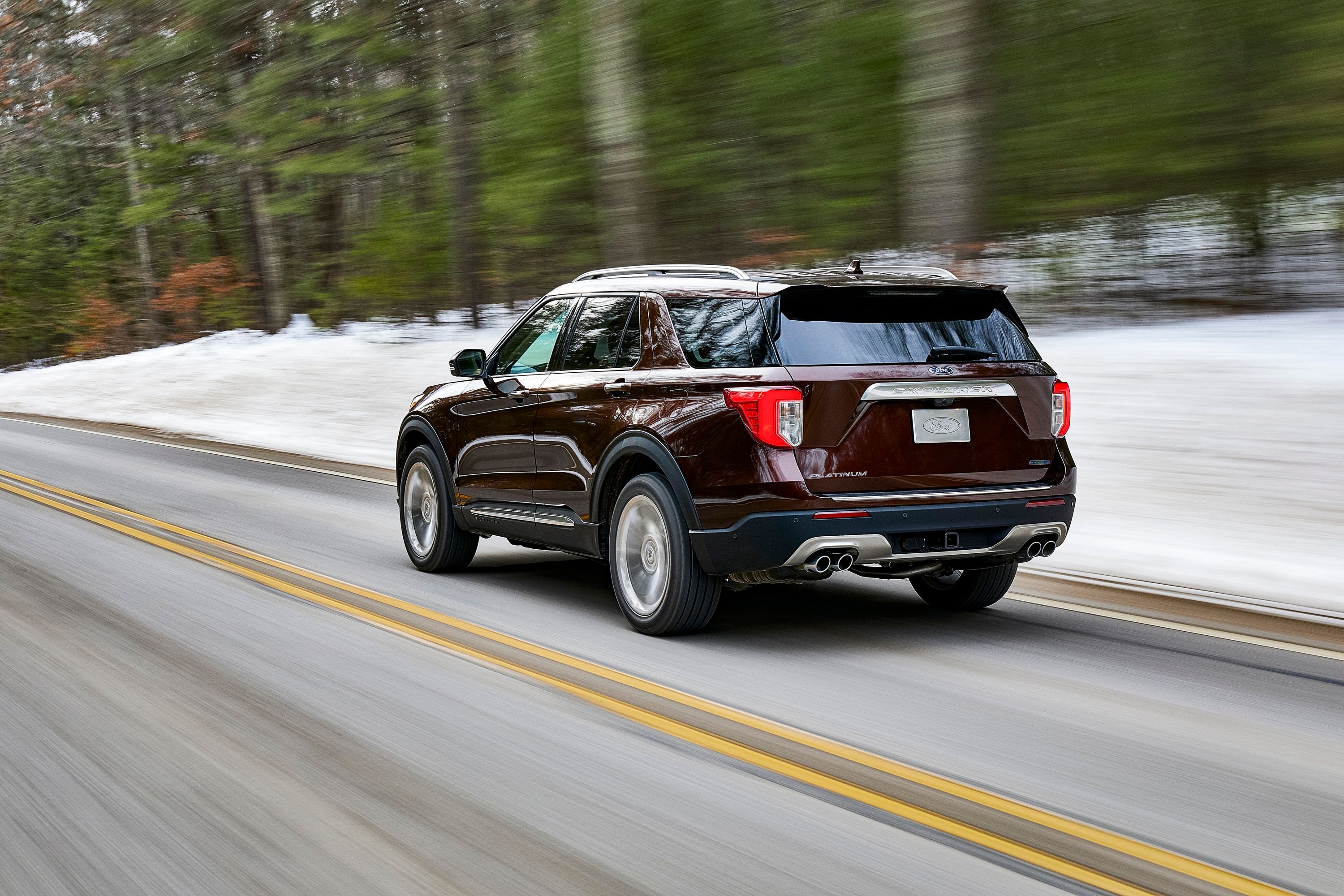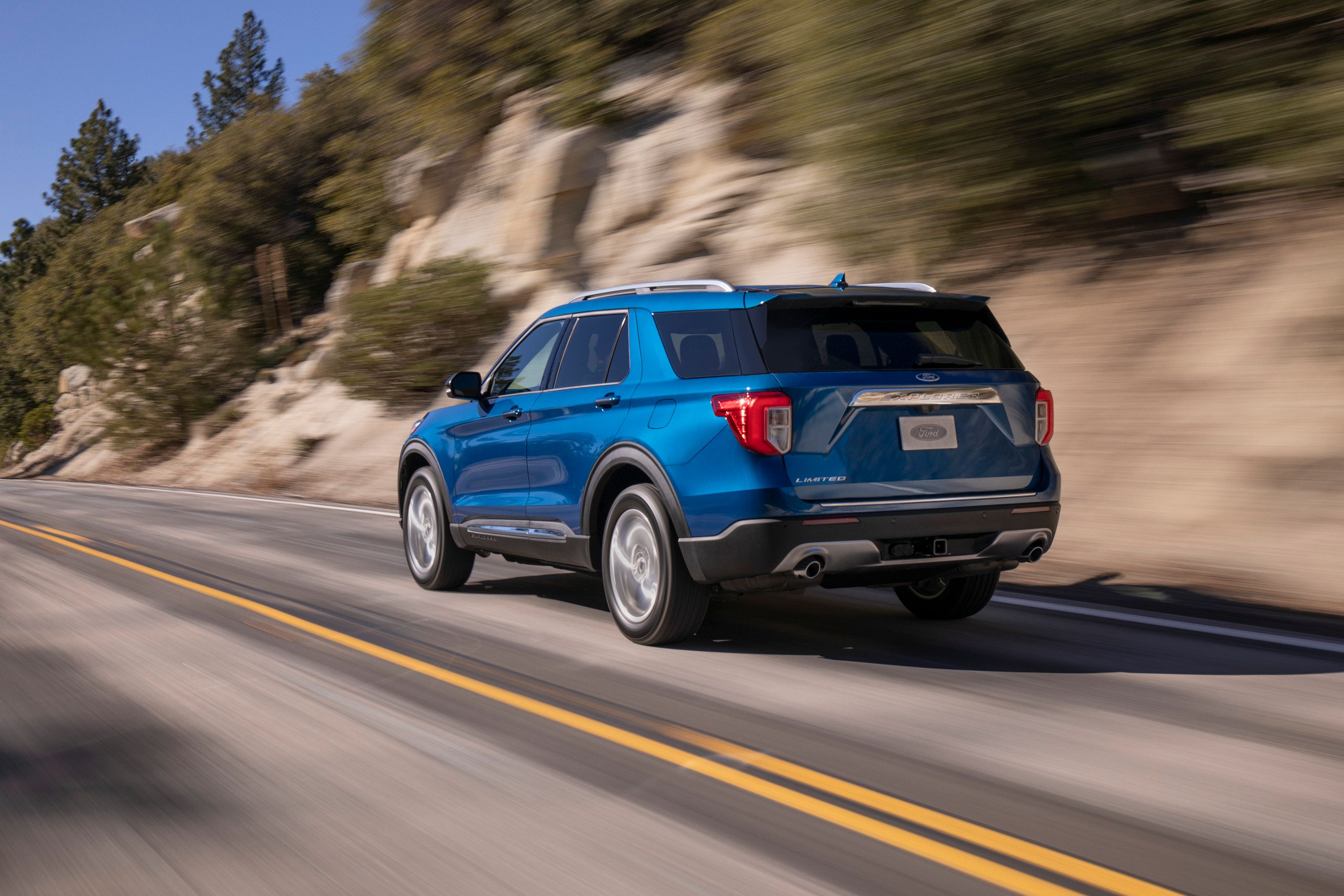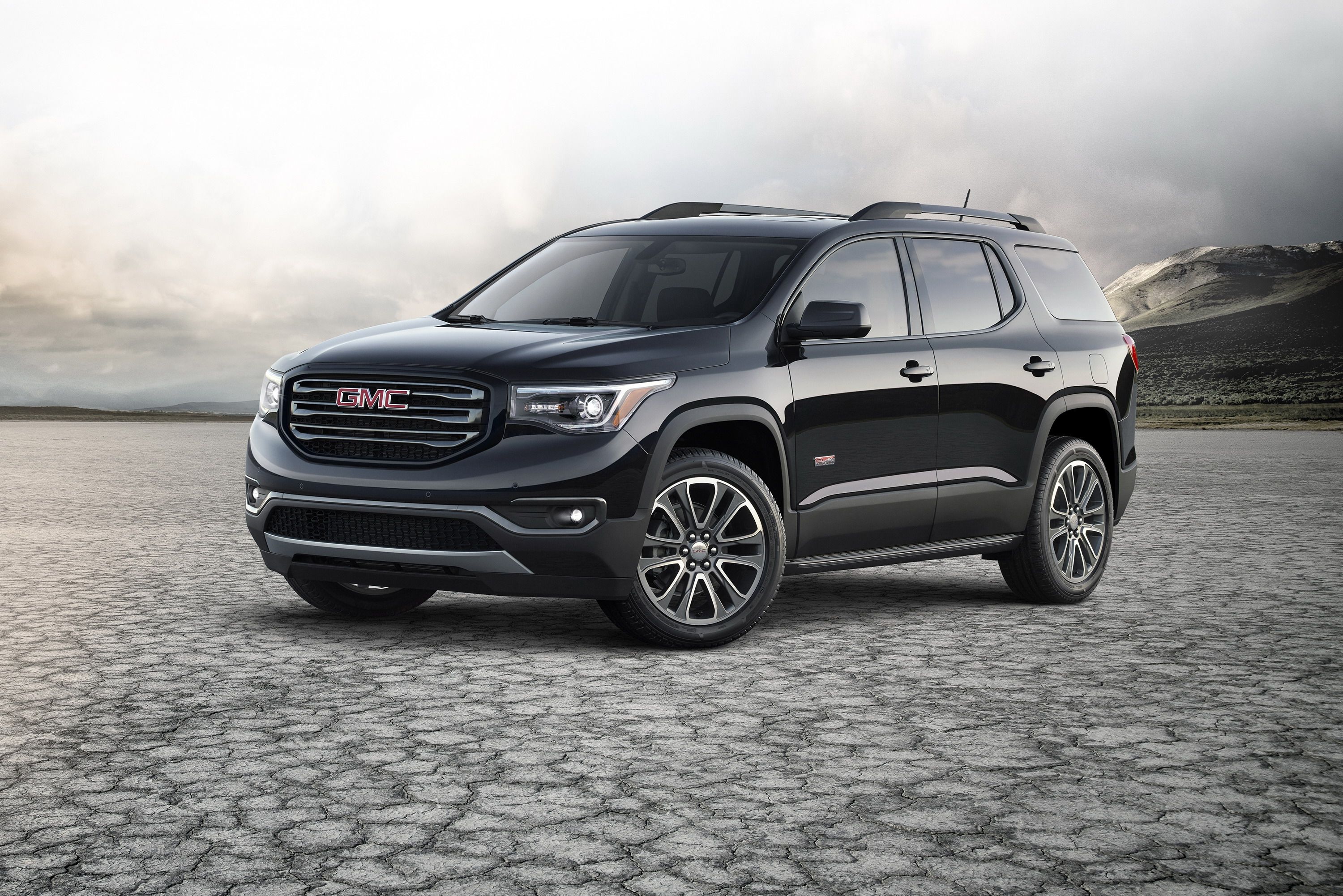The new, redesigned, Ford Explorer is here, and Ford touts it as an "adventure enabler." It's got more room on the inside, more gizmos, and it can tow a heavier payload than before. But, as the mid-size crossover SUV segment gets busier and busier, the Explorer must execute to perfection in all areas to remain at the top of the pile. One of its competitors will be GMC's Acadia.
Ford launched the new, sixth-generation, Explorer at an event at Ford Field in Detroit on Wednesday. The automaker says its focus has been on the customer 100%, trying to see what are the areas that the customers are most displeased with and then eliminating these "pain points." The result, Ford says, is a "reinvented" Explorer. Let's see how well it stacks up against the soon-to-be 3-year-old GMC Acadia.
Ford Explorer vs. GMC Acadia Exterior
|
|
ids=813605,813604 |
no_overlay=true> |
First up, the exterior.
The beefy front end isn't let down by the profile as it sports adequately big wheel arches with plastic outdoorsy add-ons. These wheel arches are filled by 18-inch rims that are standard on the base trim level and the XLT while the Limited and Platinum get 20-inch rims as standard. 21-inch aluminum ones are optional on the Platinum trim level only.
You'll also notice that the Explorer's B-pillar is still angled towards the front as it was before but it's now narrower. From the imagery available, you could say that the rear window on the Explorer is narrower than on the Acadia but that's debatable. The Explorer also seems to have broader side windows, although not by much.
At the back, Ford's prized mid-size SUV has wraparound taillights that are smaller than those on the fifth-generation model as they extend less across the side of the vehicle. The trunk lid protrudes forward towards its upper half, while the area for the numberplate remains recessed.
Talking about the Acadia, GMC's mid-size SUV offering is less of a looker when viewed from the front. The grille is standard GMC in design but the headlights and everything else give the Acadia a forgettable face. It's not ugly by any means, but the new Explorer looks more like it means business.
The Acadia also has squared-off wheel arches that work with the car's generally more boxier look. The Acadia looks even more rugged when you add to the equation the 'All-Terrain Package'. Either way, the plastic rocker panel covers on the Acadia are taller than those on the Explorer.
Size wise, the Explorer has a 7-inch longer wheelbase than the Acadia and, overall, it is 5.2 inches longer as well. It's also 3.5 inches wider and about four inches taller. That translates into loads more interior space for people, as well as cargo space. The Explorer has an approach angle of 20.1 degrees (that grows to 21 degrees on the Platinum version) and a departure angle of 22 degrees that gains 0.3 degrees on the Platinum. The ramp breakover angle is between 17.1 and 17.7 degrees while the ground clearance itself is about 8 inches, 0.8 inches better than what the Acadia delivers. In fact, the Acadia falls short when it comes to the other sections too as it's a more city-oriented crossover SUV compared to the Explorer that doesn't mind going a bit off the tarmac.
Ford Explorer vs GMC Acadia Dimensions
|
2020 Ford Explorer |
2019 GMC Acadia |
|
|
Wheelbase |
119.1 |
112.5 |
|
Length |
198.8 |
193.6 |
|
Width, excluding mirrors |
78.9 |
75.4 |
|
Width, including mirrors |
89.3 |
TBA |
|
Width, mirrors folded |
82.7 |
TBA |
|
Height |
69.9 |
66 |
|
Track, front curb |
66.9 |
64.5 |
|
Track, rear curb |
66.9 |
64.5 |
|
Front overhang |
33.7 |
TBA |
|
Rear overhang |
46 |
TBA |
|
Ground Clearance |
7.9-8.2 |
7.2 |
Interior
|
|
ids=813606,661729 |
no_overlay=true> |
All those extra inches in exterior size are visible on the inside too.
Standard features regardless of trim level include an electrically-operated trunk hatch, a 4G LTE WiFi hot spot that can host up to 10 devices, and an 8.0-inch touchscreen infotainment system that's compatible with Apple CarPlay and Android Auto. A 10-inch screen is also available as an optional extra as well as a 12.3-inch digital gauge cluster. The most interesting feature on the new Explorer is the Ford Co-Pilot360 suite that's helping you stay safe on the road at all times. The system includes automatic emergency braking with pedestrian detection, forward collision warning, a blind spot information system, rear cross traffic alert, a rearview camera, plus reverse brake assist, and active park assist that parks your car without you having to do anything more than touch a button.
The Acadia also boasts most of the safety features available on the new Explorer, although most of them are only standard in higher-trim versions so don't expect to find the fancy stuff on SL/SLE versions. As such, if you're willing to pay up to $12,000 more (that's the price of an SLT-2 Acadia over the MSRP of the base SL model), you could have the configurable Teen Driver system that blocks off some of the car's features to encourage safe driving, as GMC puts it. Then there's the Driver Alert Package II that includes lane change alert with side blind zone alert, low-speed forward automatic braking, front pedestrian braking, front and rear park assist, rear cross-traffic alert, lane keep assist with lane departure warning, following distance indicator, and forward collision alert.
As I mentioned before, the Acadia is the less spacious of the two. If the Explorer lists 40.7 inches of headroom for the front passengers and 40.5 and 38.9 inches respectively for those in the second and third rows, the Acadia drops from 40.3 inches for those in front to 39.6 inches for the middle row and only 37.2 inches for those in the back row - all without a sunroof in place.
So, browsing through these numbers you understand that the added inches of wheelbase haven't made that big of a difference when it comes to third-row passengers although those in the first two rows will most likely feel it if they hop from the Acadia to the Explorer. Finally, there's the issue of cargo space. The GMC has 79 cubic feet of cargo space behind the first row of seats and 41.7 cubic feet behind the second one respectively. With all three rows up, the Acadia can only carry 12.8 cubic feet of cargo.
Here are the Explorer's numbers: 87.8 cubic feet behind the first row, 47.9 cubic feet behind the second one and 18.2 behind the third one. Now, you can see where the extra inches in width and length come to play as the Explorer is comprehensively larger but, then again, one of the complaints regarding the Acadia was its limited offer of storage space inside.
Ford Explorer vs GMC Acadia Interior Specs
|
2020 Ford Explorer |
2019 GMC Acadia |
|
|
Seating capacity |
7 |
6 |
|
First-row headroom |
40.7 |
40.3 |
|
First-row legroom |
43 |
41 |
|
First-row shoulder room |
61.8 |
59.4 |
|
First-row hip room |
59.2 |
55.7 |
|
Second-row headroom |
40.5 |
39.6 |
|
Second-row legroom |
39 |
39.7 |
|
Second-row shoulder room |
61.9 |
58.7 |
|
Second-row hip room |
59.1 |
53.3 |
|
Third-row headroom |
38.9 |
37.2 |
|
Third-row legroom |
32.2 |
31.1 |
|
Third-row shoulder room |
54.6 |
54.3 |
|
Third-row hip room |
40.9 |
42.9 |
|
Total passenger volume (cu-ft) |
152.7 |
143.8 |
|
Cargo volume behind first row (cu-ft) |
87.8 |
79 |
|
Cargo volume behind second row (cu-ft) |
47.9 |
41.7 |
|
Cargo volume behind third row (cu-ft) |
18.2 |
12.8 |
Drivetrain and Performance
The 2019 Explorer is lighter than before and is underpinned by the Ford CD6 rear-wheel-drive platform (AWD will be optional), shared with Lincoln's Aviator.
If you want to pick up an Acadia, you can choose from one of two engines: the 2.5-liter inline-four DOHC unit that puts out 193 horsepower and 198 pound-feet of torque or the more appropriate 3.6-liter V-6 that's good enough for 310 horsepower and 271 pound-feet of torque.
It's noteworthy that the choice of engine in the new Explorer will affect the towing capability of the SUV. Ford said, through the voice of Craig Patterson's, the SUV Marketing Manager, that towing capacity is paramount for their customers for they "want the vehicle to enable whatever adventure might be,” Patterson said. “They might want to go buy a boat or someday get a Jet Ski. This is an adventure enabler."
The Acadia isn't a front-runner in this area and never has been. The SUV can barely two up to 1,000 pounds without the 'towing package'. If you've acquired that, your Acadia can now haul up to 4,000 pounds behind it, but that's still 1,300 pounds off the Explorer's might. You can still use the Acadia to tow a motorcycle trailer or a sport trailer and even a car tow dolly.
Ford Explorer vs GMC Acadia Performance Specs
|
2020 Ford Explorer Base |
2020 Ford Explore Platinum |
2019 GMC Acadia Base |
2019 GMC Acadia Denali |
|
|
Engine |
2.3 -liter I4 |
3.0-liter V-6 |
2.5-liter I4 |
3.6-liter V-6 |
|
Horsepower |
300 |
365 |
193 |
310 |
|
Torque |
310 lb-ft |
380 lb-ft |
188 lb-ft |
271 lb-ft |
|
Transmission |
10-Speed Auto |
10-Speed Auto |
six-speed auto |
six-speed auto |
|
Drive |
4WD (optional) |
4WD |
FWD |
AWD (optional) |
|
Curb Weight |
4,345 lb |
4,727 |
3,956 lb |
3956 lb |
|
Capacity |
TBA |
5,600 LB |
4,000 lb |
4,000 lb |
Final Thoughts
Ford's Explorer must fill really big shoes, that's been the story with almost any generation of this staple of the SUV world. As a model that's known for being a top-seller, the new generation must keep that trend going, especially at a time when mid-size SUVs account for about 14% of the market. Last year, Ford sold 227,732 Explorers despite the fact that sales were down by almost 10% halfway through the year. But, at the same time, the Explorer remained the best-selling SUV in America.
The Acadia was never designed with such high sales numbers in mind and, as a result, GMC is probably pleased to have shipped over 88,000 of them over the last 12 months. The sales flow will also depend on GMC's timing related to a facelift that should come soon since the Acadia has run unchanged since the second generation was introduced in 2017. Finally, let's point out that the two models hold value in a similar fashion, both the Acadia and the fifth-gen Explorer trading hands in the $17,000 to $28,000 ballpark depending on trim levels and options.
Further reading
Read our full review on the 2020 Ford Explorer.
Read our full review on the 2019 GMC Acadia.

